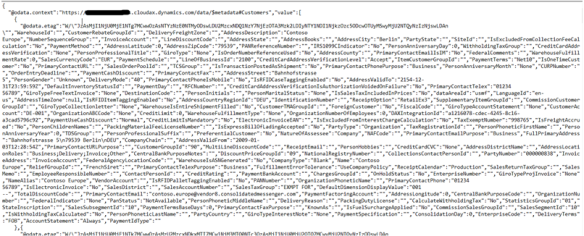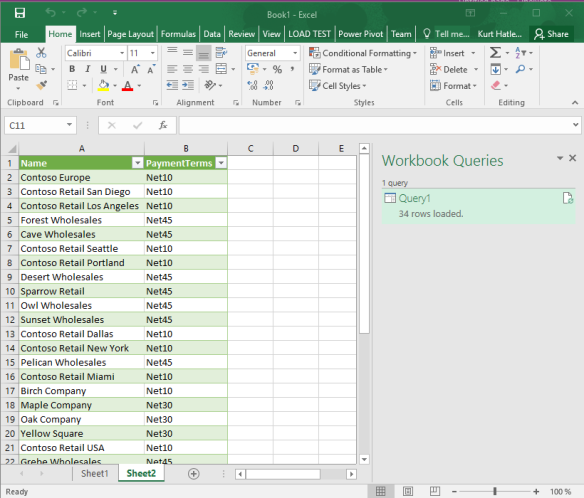
|
|
|
|
#1 |
|
Участник
|
kurthatlevik: AX 7 RTW – My ODATA and JSON journey – Part I
Источник: https://kurthatlevik.wordpress.com/2...ourney-part-i/
============== Learn the word; ODATA. We will hear a lot of ODATA in the future, because it will change the way we integrate and how we exchange information between AX and other systems. A good starting point is the AX help wiki, that Kuntal Mehta created. I have decided to explore what the ODATA can do, and wanted to write a bit about my journey. Instead of trying to explain all technical details of data entities and how the architecture is, then let us rather just test something J What you need to test what I’m doing is
To get all entities available to you use your Site address, and add “/data” at the end.  Then save the file you receive, and open it in notepad. (I have associated *.json with notepad). The file you get looks like this:  Each line here represents a data entity service we can use. The format of this is the JSON format, but that is not important now. Step2: Show me the customers In the file you may find that there is an entity/schema named “Customers“. I can therefore just add the “/data/Customers” to my URL  And then I get a JSON file of all the customers;  But this is a bit “cloudy” and I can further filer down what I want. Let’s say I just want to see all customer names. I can then add “/data/Customers/?$select=Name” to my URL  Now it returns a JSON file with only the Name.  If I wanted to add one more column, like the Payment terms, the syntax would look like “/data/Customers/?$select=Name,PaymentTerms“, but this would not work because the comma cannot be used on a URL. I therefore need to replace the comma with %2C, that is the URL representation of comma. For multiple columns I therefore add “/data/Customers/?$select=Name%2CPaymentTerms”  You see some strange “@data.etag”, and here is an explanation. It is for caching. Step3: Can I read this in Excel? Yes. Excel can import OData, and format it like we would.  Then fill in the /data URL, select schema, and then select fields. And then you may read directly into Excel all entities made available in AX RTW, even without the AX connector.  Step5: Show me all ! Sure. Try to add the “/data/$metadata“, and AX return All schemas, fields and relations. It take a long time, but nice to explore. Step6: Can we use DIXF to import directly from OData feeds ? This is what I would love to see. But I have not found it yet. Happy DAX’ing ;-) Источник: https://kurthatlevik.wordpress.com/2...ourney-part-i/
__________________
Расскажите о новых и интересных блогах по Microsoft Dynamics, напишите личное сообщение администратору. |
|
|
|
|
| Опции темы | Поиск в этой теме |
| Опции просмотра | |
|